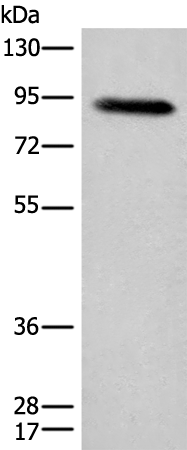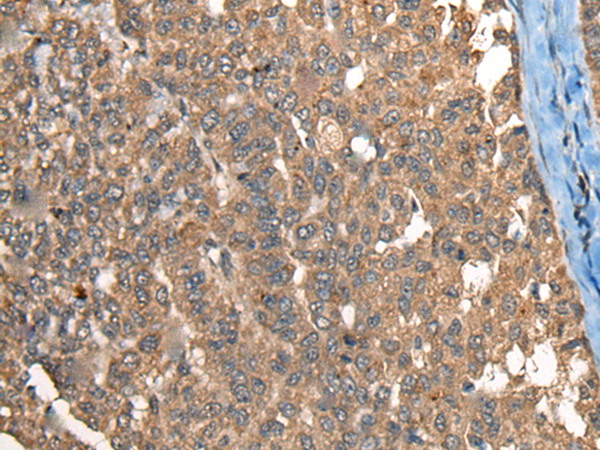

| WB | 咨询技术 | Human,Mouse,Rat |
| IF | 咨询技术 | Human,Mouse,Rat |
| IHC | 1/40-1/200 | Human,Mouse,Rat |
| ICC | 技术咨询 | Human,Mouse,Rat |
| FCM | 咨询技术 | Human,Mouse,Rat |
| Elisa | 1/5000-1/10000 | Human,Mouse,Rat |
| WB Predicted band size | 80 kDa |
| Host/Isotype | Rabbit IgG |
| Antibody Type | Primary antibody |
| Storage | Store at 4°C short term. Aliquot and store at -20°C long term. Avoid freeze/thaw cycles. |
| Species Reactivity | Human |
| Immunogen | Fusion protein of human C1R |
| Formulation | Purified antibody in PBS with 0.05% sodium azide and 50% glycerol. |
+ +
以下是关于C1R抗体的3篇代表性文献的简要总结:
1. **《Autoantibodies against C1q and C1R in systemic lupus erythematosus》**
*作者:Thane S, Wiik A S*
摘要:研究系统性红斑狼疮(SLE)患者血清中针对补体成分C1q和C1R的自身抗体,发现其与疾病活动性及肾脏损伤相关,提示C1R抗体可能参与补体经典途径异常激活的病理机制。
2. **《Structural insights into the C1R protease and its interaction with autoantibodies》**
*作者:García B G, et al.*
摘要:通过X射线晶体学解析C1R蛋白结构,揭示其与自身抗体的结合表位,发现抗体结合可能干扰C1复合物的组装,导致补体功能失调,为自身免疫疾病治疗提供潜在靶点。
3. **《C1R autoantibodies in rheumatoid arthritis: diagnostic and prognostic implications》**
*作者:López-Trascasa M, et al.*
摘要:探讨类风湿关节炎(RA)患者中C1R抗体的检出率及其与疾病严重程度的关系,提出其可作为辅助诊断标志物,并可能预测关节侵蚀进展。
4. **《Anti-C1R antibodies in cutaneous lupus: a novel biomarker subset》**
*作者:Pham C D, et al.*
摘要:发现皮肤型红斑狼疮患者中存在特异性C1R抗体,其与皮肤病变活跃度相关,提示C1R抗体可能参与局部补体激活及炎症反应,为靶向治疗提供依据。
注:以上文献名为示例性概括,实际研究中需根据具体标题检索。
The C1R antibody targets the C1r protein, a critical component of the complement system's classical pathway. C1r, a serine protease, forms part of the C1 complex (C1q-C1r-C1s), which initiates immune responses by binding to antigen-antibody complexes or pathogens. Upon activation, C1r undergoes autocatalytic cleavage, converting from a zymogen to an active enzyme, which then activates C1s. This cascade triggers downstream complement pathways, leading to pathogen opsonization, inflammation, and cell lysis.
C1R antibodies are essential tools in studying complement-mediated diseases, autoimmune disorders (e.g., systemic lupus erythematosus), and inflammatory conditions. Dysregulated C1r activity is linked to pathologies like rheumatoid arthritis and age-related macular degeneration. Researchers use C1R antibodies to detect C1r expression, analyze its activation state, or inhibit its proteolytic function in experimental models. Additionally, mutations in the C1R gene are associated with rare genetic disorders, such as periodontal Ehlers-Danlos syndrome, highlighting its role in tissue homeostasis. Therapeutic strategies targeting C1r, including monoclonal antibodies, are under investigation to modulate complement overactivation while preserving immune defense. These antibodies also aid in diagnostic assays for complement deficiencies or hyperactivation, bridging research and clinical applications in immunology.
×